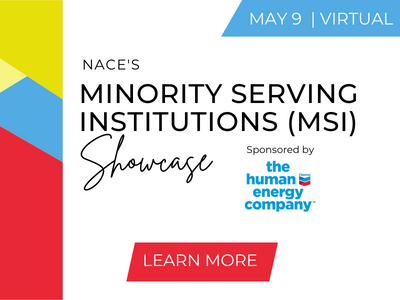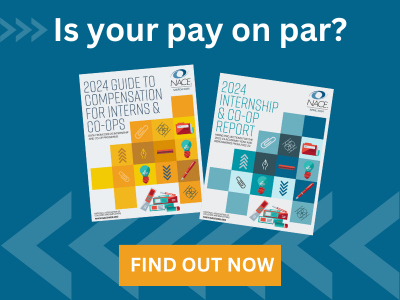The Williams Companies seeks to hire and retain students from universities or technical schools to align its talent pipeline with its workforce planning. Williams’ internship program is an essential component of these efforts.
“We want to bring students in, develop them during internships, educate them about our industry, evaluate them, and then convert this talent into our full-time employee base,” says Paige Cole, Williams’ HR program manager.
In 2022, Williams converted 79% of its 50 interns. To accomplish this, Williams—which recruits nationally and hires primarily for business, engineering, IT, and operations—focuses on hiring interns who meet their criteria for full-time, entry-level roles.
“Hiring talent for internships who meet our criteria for full-time positions is 100% of our focus,” Cole says.
“In a shift for us, we are now evaluating talent based on the eight NACE Career Readiness Competencies. We primarily look for professionalism, communication, critical thinking, teamwork, and career and self-development.”
Adds Leonelle Thompson, Williams’ manager, early career: “We focused on the competencies where we saw gaps in our intern class and that align with the gaps NACE saw nationally. We are going to start boiling it down to the competencies interns need to be successful in their first role.
“It’s easier to talk that language with career services and professors and we can help coach our interns. We want to get in front of where we see gaps and help develop those competencies instead of waiting until the end of the internship to evaluate our interns on them.”
Williams also looks for candidates who are involved on campus, have a part-time job, hold leadership roles in student organizations, and have other experiences that demonstrate work ethic and professionalism and indicate they would be successful with the company.
During internships, Cole says Williams looks for students who, among other things, ask questions.
“We have a very strong culture of mentoring. We try to make sure everyone’s comfortable asking questions. Plus, doing so can serve as evidence of critical thinking and communication skills,” she notes.
Overcoming challenges
One of the challenges Williams works to overcome in a competitive job market is a lack of name recognition.
“Williams isn’t a retail brand, so it’s challenging to brand ourself where we’re not known,” Cole explains.
“We likely work with a provider, so customers do not write checks to us for their natural gas. To overcome this, our job descriptions are very specific. We provide details about what we’re looking for in talent to fill our entry-level roles. In addition, we’re clear about our recruiting process and our timelines.”
Williams is also transparent about the salaries it offers to interns. Williams’ compensation team sets entry-level salaries based on analysis of market data.
“We then take that starting salary for entry level and determine a percentage for interns based on how many summers they have left,” Thompson says.
“When we present an offer to an intern, it’s our best offer. Our salaries are not negotiable.”
Williams posts its internships for the following summer during the second week of August. It then recruits through the end of September and interviews through mid-October.
“With regards to how long we give them to accept, I think we’re unique in that—with just a couple of exceptions because, for example, there may be a major for which we’re hiring just one candidate—we give all our students until the last Thursday in October to accept,” Cole notes.
“It doesn’t matter if we extended that offer during the first week of September or the first week of October, we give them until the last Thursday in October to accept. We generally give them far more than three weeks.”
To celebrate its incoming class of interns and make the occasion memorable, Williams holds a “signing day”—similar to when Division 1 student-athletes sign their letters of intent—on the last Friday of October.
“We bring the students who have accepted together on their campuses and have a signing,” Cole says.
“We give our new interns a certificate and a hat and take some photos and celebrate them coming to work for us. We share it on social media. Last year, some of the students brought their families and roommates. One of our hires played college soccer and her whole team came to celebrate with her. We encourage them to bring people who are important to them because getting their first job is a big deal. We also have ‘campus champions’ who come to campus and join the celebration. It’s a nice, memorable afternoon.”
Onboarding and engagement
Williams overhauled its onboarding process last year. It now employs a “keep warm” strategy, so once a student accepts its offer, Williams is in contact with them and, among other connections, sends them swag bags for finals. It also offers its incoming interns engagement and professional development opportunities that are not required.
“We encourage them to attend these sessions to get to know us as they wait to onboard,” Cole says.
Williams uses a program called Symba that is a mechanism for the interns to:
- Communicate with one another;
- Watch videos about the company so they can learn more about Williams;
- Complete tasks before they arrive;
- Access FAQs and details about housing, what to expect, and more.
In addition, Williams’ HR system, Workday, offers “Workday Journey,” which walks interns through the steps from Day 1 that they need to check off, such as setting up a one-on-one meeting with their leader.
“These platforms and activities help our interns prepare prior to them starting their internships,” Cole says.
“We know onboarding is a challenge, especially for students working in this environment for the first time.”
Enlisting ambassadors
Upon completion of the internships, Williams offers all interns an opportunity to be a student ambassador on their campus. These stipend positions involve the ambassadors:
- Reaching out to students in their discipline to let them know about Wiliams;
- Joining Williams campus champions at the career fair and other events;
- Using funds provided by Williams to take peers interested in Williams out for coffee and a bite to eat to discuss the company and its opportunities; and
- Sharing information about Williams on their social media channels.
“We recently shipped their boxes with a Williams student ambassador button, T-shirt, and some swag,” Cole says.
“We keep them engaged and connected as they’re in constant communication with us and they’re going out and helping to brand Williams.”
Collecting and sharing data
Another aspect of the switch to using the NACE Career Readiness Competencies as the foundation of its internship program is collecting data that may prove valuable to Williams and its campus partners.
Williams surveyed its interns on if they felt they were career ready to start their internship and their mentors on whether they thought their intern was ready for their internship from a career readiness standpoint.
“We are going to do the same thing after fall recruiting since we are evaluating the candidates we interview on the competencies,” Cole explains.
“We pulled that feedback into summaries that we shared with all of our campus partners in career services so they can see where their students felt their gaps were versus where our mentors felt their gaps were and that they did align with NACE’s career readiness data. We plan to use that data as we develop our summer intern program, and we’re sharing it with our partner schools to possibly tweak their programming.”
Cole and Thompson offer some tips for strengthening an internship program, including:
- Knowing your organization’s hiring needs, recruiters are engaging majors and talent that align with hiring needs.
- Being transparent so candidates understand the recruiting process and timelines.
- Giving interns an opportunity to give feedback on what they want to do with their career.
“It’s also important to create a very positive, authentic internship during which the interns are doing meaningful work that adds value to the organization and contributes to their development,” Cole says.






